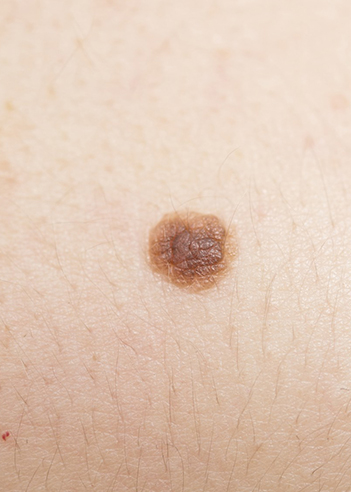Services
Moles


Moles
Melanocytes produce melanin, the pigment that gives skin its natural color. When skin is exposed to the sun, melanocytes produce more pigment, causing the skin to tan, or darken. Sometimes, clusters of melanocytes and surrounding tissue form noncancerous growths called moles. (A mole is also called a nevus, or the plural, nevi.)
Moles are very common. Most people have between 10 and 40 moles. Moles may be pink, tan, brown, or a color that is very close to the person’s normal skin tone. Moles can be flat or raised and may darken during pregnancy or after sun exposure. They may be present at birth or may appear later on-usually before age 40. They tend to fade away in older people. When moles are surgically removed, they normally do not return.
Most moles are harmless and do not require treatment. If you have moles, keep an inventory of their number and appearance. Change in size, shape or color of a mole is cause for medical evaluation. Moles that develop in adult life should also be evaluated.
Sun protection with appropriate clothing and sunscreen are the best way to avoid mole development.